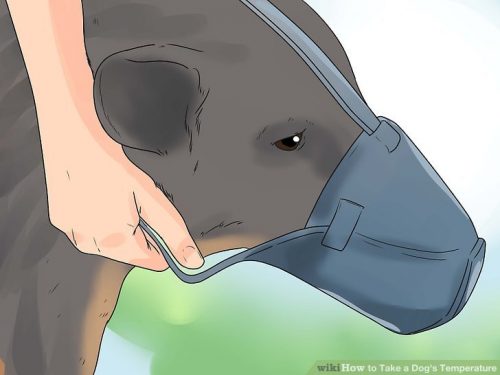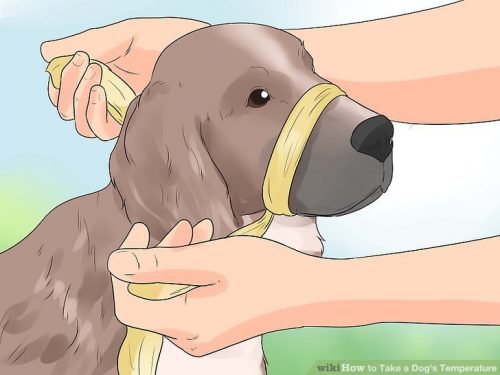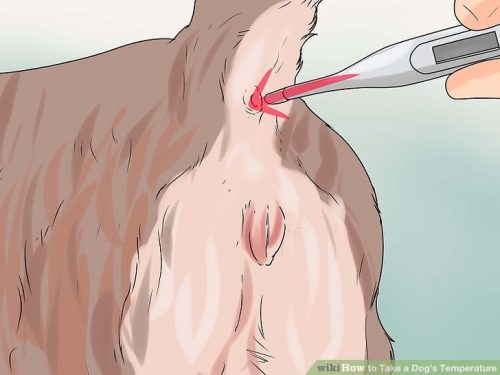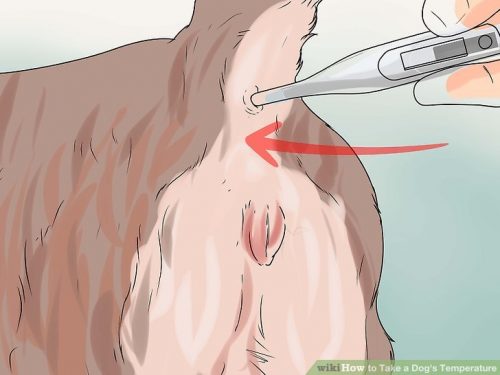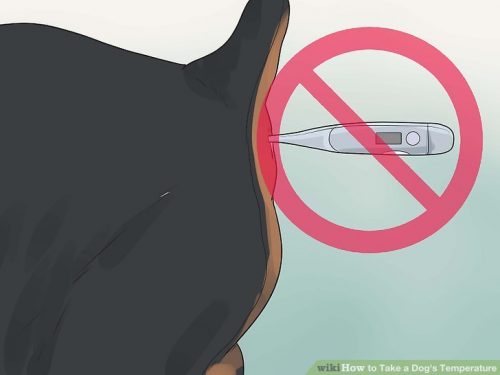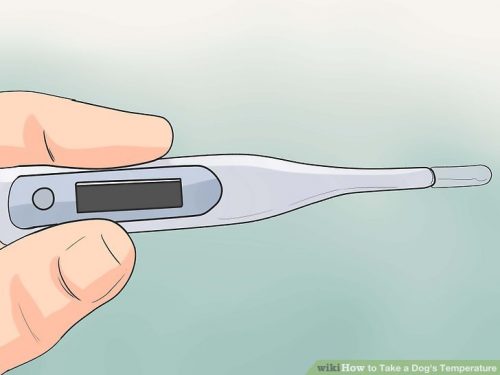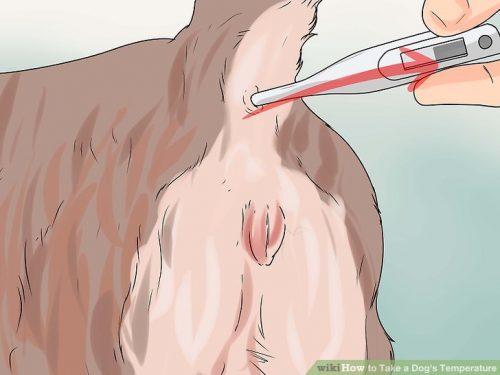Sick dogs often show a lack of appetite and energy, restlessness, panting, or inactivity. If you suspect that your dog is not feeling well, you may want to take his temperature at home to gather information about symptoms of illness. Unlike humans, dogs will not show the same signs of having an elevated temperature, such as warm skin or shivering. Therefore, it is important to learn how to take a dog’s temperature to get an idea how high his or her fever is and to possibly see a veterinarian.
How to take a dogs temperature
This article was co-authored by Pippa Elliott, MRCVS. Dr. Elliott is a veterinarian with over thirty years of experience. She graduated from the University of Glasgow in 1987, and worked as a veterinary surgeon for 7 years. Afterward, Dr. Elliott worked as a veterinarian at an animal clinic for over a decade.
https://www.wikihow.pet/Take-a-Dog’s-Temperature
Preparing to take your dogs temperature:
Gather the appropriate materials. It is best to use a digital thermometer purchased at a pet supply company. You will also need a lubricant such as Vaseline or KY jelly. You may also want a muzzle and a pen and paper to write down the temperature reading.
Find a helper. Taking a dog’s temperature is much easier with two people. Ideally, one person will restrain the dog while the second person inserts the thermometer and takes the dog’s temperature.
Determine the best location for the procedure. A small room such as a bathroom may be a good option for taking the dog’s temperature so that the dog will not try to run away. Placing a dog on top of a table is a good approach, as it can keep you from straining your back and give you more ready access to the dog’s rectum. Small or medium-sized dogs should be placed on a table for easier access. Be sure that someone stays with any dog on top of a table. An unattended dog may try to jump down from the table and injure herself. Larger dogs may remain on the floor for the procedure.
Stay calm. If you are nervous about taking your dog’s temperature, your dog may pick up on your energy and become anxious. Stay calm and confident as you go through the steps of this process, and be sure to praise and talk to your dog.
Holding the dog:
Place the dog on a table or the floor. Have your helper place the dog on the table or in the room in which you are going to take the dog’s temperature. The dog’s tail should be on the same side as your dominant hand. For example, if you are right handed, you will face the side of the dog with the dog’s head on your left side and his tail on your right. Your assistant should stand on the opposite side of the dog, so you are facing towards each other with the dog in between.
Put a muzzle around the dog’s mouth. Even friendly dogs can, at times, bite people if they feel threatened. If you think that your dog will be upset by the procedure, or if he is acting anxious, you may want to place a muzzle on his mouth to ensure your safety. A walking muzzle should work if you have one.
Make a muzzle if necessary. A standard necktie can be made into an effective temporary muzzle in a pinch. Make a single-throw loop in the middle of a necktie. Make the loop slightly larger than the diameter of the dog’s muzzle. Place the loop carefully and slowly over the dog’s nose and tighten it. The muzzle should be tight enough that it will not slide off of the dog’s nose if he shakes his head. Wind the ends of the tie around the dog’s muzzle in loops until you reach the ends, and tie the ends together.
Restrain the dog securely. Be sure that your helper holds the dog securely by kneeling next to a dog on the floor or holding a dog on a table securely. Your assistant should slide her arm under the dog’s stomach and curl it up to pull the dog’s rear half against her chest. She should then put her other hand around the front of the dog’s neck, underneath his chin and towards his ear. She should gently pull the dog’s head and neck towards her to rest on her shoulder. If the dog begins to wiggle or squirm during the procedure, the assistant should pull him in towards her more tightly, using a soothing tone of voice to reassure the dog.
Know when to stop. If the dog shows obvious signs of discomfort, aggression, or panic, do not continue to restrain him to take his temperature. It is better for the safety and health of all involved to use discretion and know when your dog feels threatened.
Taking the temperature:
Lubricate the thermometer. Holding the thermometer in your dominant hand (which should be near the dog’s tail end), dip the end of the thermometer in the lubricant. Be sure to apply a generous amount of lubricant, preferably retrieving a substantial blob on the end of the thermometer.
Lift the dog’s tail. Use your non-dominant hand (eg. your left hand if you are right-handed) to grasp the base of the dog’s tail and lift it up. You should firmly but gently lift up on the dog’s tail, exposing the dog’s anus.
Locate the dog’s anus. The dog’s anus is directly beneath the tail and is circular. Be aware that in female dogs, the vulva is lower, between the dog’s legs, and is shaped more like a slit. Do not insert the thermometer into a dog’s vulva.
Position the thermometer. Hold the thermometer parallel to the dog’s long axis, holding the thermometer horizontal and pointing from tail to head. Keeping the thermometer in this position, touch the end of the thermometer to the anus. [7]
Be sure not to tilt the thermometer up or down when inserting into the anus. Instead, keep it completely horizontal.
Insert the thermometer. Muscles in the anal ring (the muscles surrounding the anus) rest in a contracted position, closing the anus. To insert the thermometer you need to gently override these muscles and slide the thermometer into the rectum by slowly twisting the thermometer as you slide it in.
Use a slight twisting motion to carefully slip the thermometer into the dog’s anus. Insert half the length of the thermometer into the dog’s rectum. This may be less with a very small dog. Be sure to hold on to the thermometer. Do not let the entire thermometer slip into the dog’s rectum.
Avoid forcing the thermometer. DO NOT force the thermometer if it does not go in to the anus easily. You could puncture the dog’s bowel and cause him serious harm or even death. If the thermometer encounters resistance, remove the thermometer and try again. You may need to reapply lubricant if you start over.
Take the dog’s temperature. If you are using a digital thermometer, you will need to push the button on the shaft of the thermometer to turn it on. Push it again to begin taking the dog’s temperature. The display will likely flash or you will see the temperature increasing while you take the dog’s temperature. Wait between 5 and 60 seconds, depending upon the thermometer. When you hear the thermometer beep, or if the temperature has leveled off and is remaining steady, you are finished.
Assessing the results:
Read the results. Look at the screen on the digital thermometer when it has beeped. If possible, write down the temperature reading so that you do not forget. The thermometer can be read while still in the dog’s anus or after removal, but be sure to check it quickly, before the screen shuts off.
Remove the thermometer. Slide the thermometer out of the dog’s anus, pulling straight back and continuing to keep the thermometer horizontal (parallel with the table or floor).
Disinfect the thermometer. Use a disinfectant or rubbing alcohol to disinfect the thermometer. Place the disinfectant on a cotton ball and rub the end of the thermometer, twisting the thermometer until the cotton ball comes away clean.[8] Place the thermometer back in its original packaging for storage.
Consult normal temperature ranges. Dogs’ body temperatures differ slightly from human temperatures. While humans’ normal body temperature is 98.6, a dog generally ranges from 100.5 to 102.5 degrees Fahrenheit (or 38 to 39.2 degrees Celsius). A temperature above 39.2 Celsius is slightly raised but may not be a cause for concern. A temperature above 39.5 Celsius is classed as a fever and may be a sign of need for veterinary care.
Call your veterinarian. If your dog has an elevated fever, particularly if accompanied by other signs of illness such as loss of appetite or lethargy, call your vet for advice. You may need to make an appointment to care for your pet.



